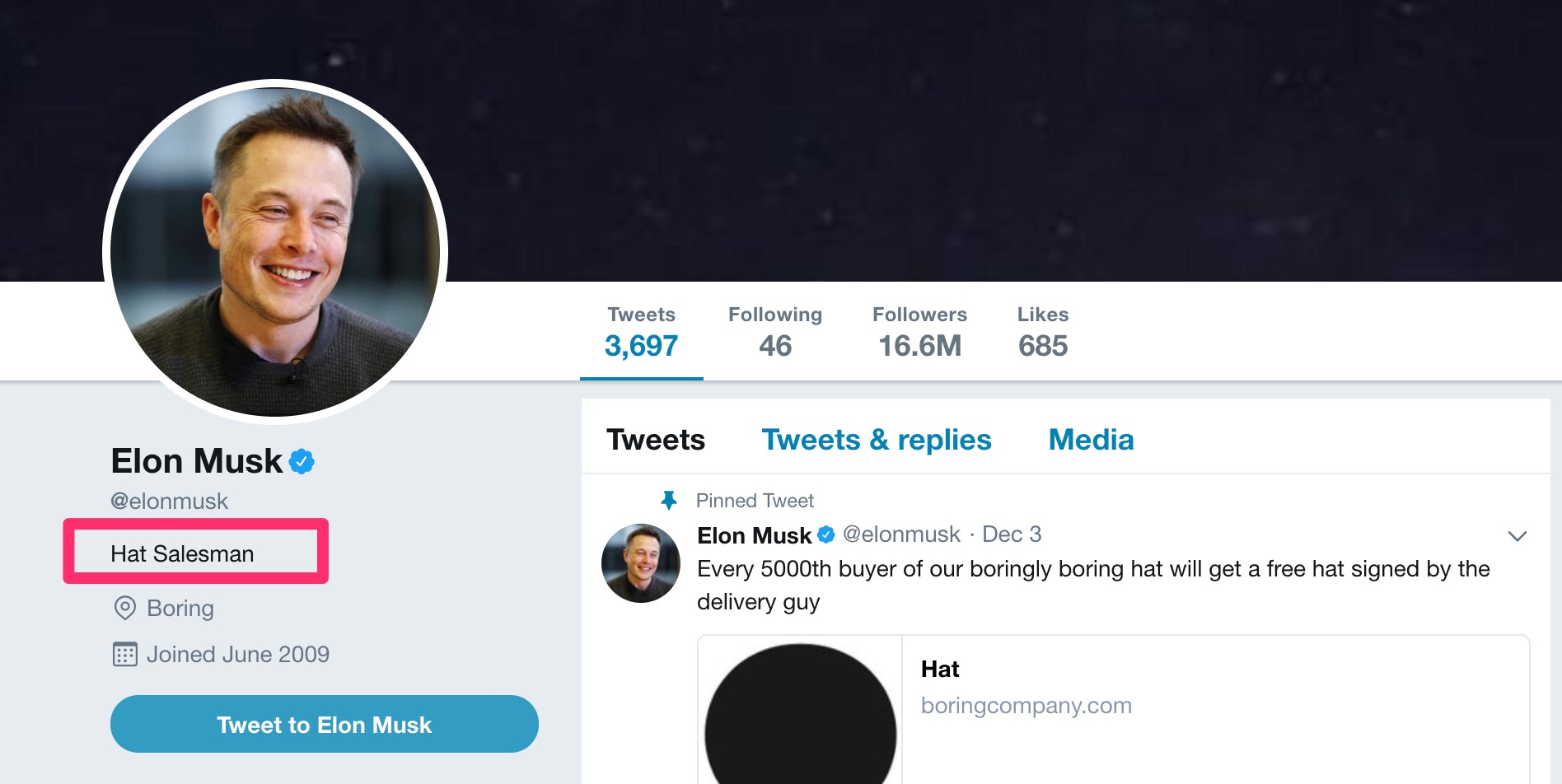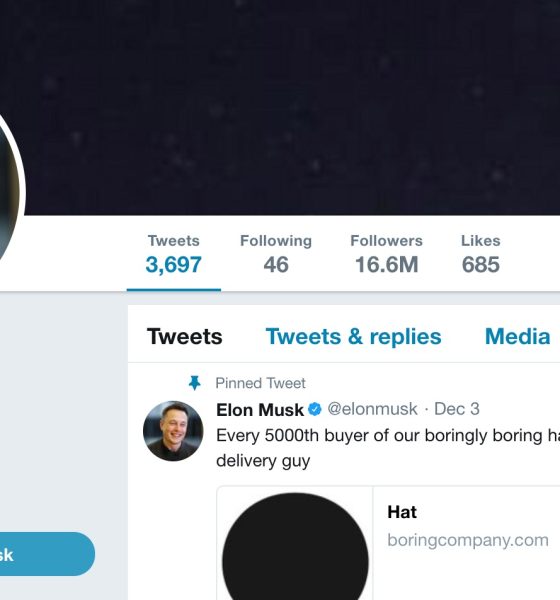

News
Could Elon Musk tweet for all of eternity? Digital avatar technology could make it happen
Digital avatars are a blend of science fiction and our current reality, but where is that line drawn, really? Imagine the current minds behind today’s most promising technologies and businesses leaving electronic copies of themselves so that, rather than just existing in nostalgic memories, they could continue contributing to the global conversation for all of digital eternity.
That’s right. The tweets of Elon Musk wouldn’t just be archived for historic perusal. He’d still be tweeting (or opining on a similar platform) long after his great-great-great-grandchildren were graduating from high school on Mars.
Of course, that particular goal could likely be achieved with minimal coding effort utilizing a dataset of his public comments, but that’s not all digital avatar technology is proposing. Imagine being able to approach Elon for personalized business advice, his opinion on a proposed carbon regulation, or thoughts on the name of an off-planet colony, all without the real magnate (magnet?) being directly involved in the conversation – or even alive, for that matter.
MIT Technology Review recently published an article featuring Augmented Eternity, a company developing an application which will host digital personas based on its customers that can be interacted with posthumously. For example, a customer’s business persona could give advice on a corporate deal, and a private persona could be involved with family matters. Utilizing personal data analyzed by artificial intelligence to achieve its goals, Augmented Eternity isn’t the only business on the market for this kind of digital interactivity.
Eternime wants you to live forever as a digital version of your after you die. [Credit: Eterni.me]
The company Eterni.me describes its services as a collection of “your thoughts, stories and memories, curate[d] [into] an intelligent avatar that looks like you…[because]…we all pass away, sooner or later…eventually, we are all forgotten.” Another company with a focus on the living over the dead, ObEN, describes its product as “Personal Artificial Intelligence (PAI)” comprising “personalized digital avatars [that] look, sound, sing, and behave like you…capable of performing a variety of useful tasks.” With its product being a “verified intelligent 3D avatar…perform[ing] activities on your behalf”, ObEN takes direct aim at increasing present day productivity, i.e., benefitting the customer while they are alive.
Admittedly, the idea of storing personal data for use in an artificial intelligence environment isn’t a new one. The concept of creating an avatar embodying the personality of any person has at least been floating around since science fiction envisioned separating human minds from their bodies. One of the notable recent imaginings in entertainment of this concept was seen in the episode, “Be Right Back” from the British science fiction series, “Black Mirror”. In the episode, a widow is able to recreate her dead partner, first as a type of chat box, then a telephone personality, and finally a corporeal being, all by using data obtained via his public electronic records.
Another recent and compelling imagining of this scenario is found in the series, “Caprica”, wherein a teenage girl’s father uploads a sentient avatar of his dead daughter into an advanced robot. The sentience, perhaps, is the factor that makes the software most dangerous, and the avatar’s actions throughout the series confirm this concern. Danger and advanced artificial intelligence are two concepts that seem to come wrapped up in one another, and here we come full circle back to Elon Musk.
When asked what he sees about AI that others with less concern about its future do, Elon replied, “Smart people…define themselves by their intelligence and…they don’t like the idea that a machine could be way smarter than them, so they discount the idea…it’s the wishful thinking situation.” Having also posited that AI is more dangerous than nuclear warheads, there’s no mistaking his position that more care is needed towards the safety of its advancement.
Another major concern of Elon’s, however, is an extinction-level event which will end humanity, and this concern is part of what drives his and SpaceX’s mission towards colonization of Mars. Could digital avatars be a place where concerns and prospects find common ground? Aside from physically relocating part of humanity to another planet to ensure its long-term survival, encapsulating humanity in digital (smarter?) form as proposed by avatar companies might be another way to ensure the legacy of the species, not just individual customers.
Then again, if we’re all living in a simulation to begin with, digitizing our personas may just be completing the predicted circle of life. Stay tuned – the future of tech moves fast.

News
Tesla starts showing how FSD will change lives in Europe
Local officials tested the system on narrow country roads and were impressed by FSD’s smooth, human-like driving, with some calling the service a game-changer for everyday life in areas that are far from urban centers.

Tesla has launched Europe’s first public shuttle service using Full Self-Driving (Supervised) in the rural Eifelkreis Bitburg-Prüm region of Germany, demonstrating how the technology can restore independence and mobility for people who struggle with limited transport options.
Local officials tested the system on narrow country roads and were impressed by FSD’s smooth, human-like driving, with some calling the service a game-changer for everyday life in areas that are far from urban centers.
Officials see real impact on rural residents
Arzfeld Mayor Johannes Kuhl and District Administrator Andreas Kruppert personally tested the Tesla shuttle service. This allowed them to see just how well FSD navigated winding lanes and rural roads confidently. Kruppert said, “Autonomous driving sounds like science fiction to many, but we simply see here that it works totally well in rural regions too.” Kuhl, for his part, also noted that FSD “feels like a very experienced driver.”
The pilot complements the area’s “Citizen Bus” program, which provides on-demand rides for elderly residents who can no longer drive themselves. Tesla Europe shared a video of a demonstration of the service, highlighting how FSD gives people their freedom back, even in places where public transport is not as prevalent.
What the Ministry for Economic Affairs and Transport says
Rhineland-Palatinate’s Minister Daniela Schmitt supported the project, praising the collaboration that made this “first of its kind in Europe” possible. As per the ministry, the rural rollout for the service shows FSD’s potential beyond major cities, and it delivers tangible benefits like grocery runs, doctor visits, and social connections for isolated residents.
“Reliable and flexible mobility is especially vital in rural areas. With the launch of a shuttle service using self-driving vehicles (FSD supervised) by Tesla in the Eifelkreis Bitburg-Prüm, an innovative pilot project is now getting underway that complements local community bus services. It is the first project of its kind in Europe.
“The result is a real gain for rural mobility: greater accessibility, more flexibility and tangible benefits for everyday life. A strong signal for innovation, cooperation and future-oriented mobility beyond urban centers,” the ministry wrote in a LinkedIn post.
News
Tesla China quietly posts Robotaxi-related job listing
Tesla China is currently seeking a Low Voltage Electrical Engineer to work on circuit board design for the company’s autonomous vehicles.

Tesla has posted a new job listing in Shanghai explicitly tied to its Robotaxi program, fueling speculation that the company is preparing to launch its dedicated autonomous ride-hailing service in China.
As noted in the listing, Tesla China is currently seeking a Low Voltage Electrical Engineer to work on circuit board design for the company’s autonomous vehicles.
Robotaxi-specific role
The listing, which was shared on social media platform X by industry watcher @tslaming, suggested that Tesla China is looking to fill the role urgently. The job listing itself specifically mentions that the person hired for the role will be working on the Low Voltage Hardware team, which would design the circuit boards that would serve as the nervous system of the Robotaxi.
Key tasks for the role, as indicated in the job listing, include collaboration with PCB layout, firmware, mechanical, program management, and validation teams, among other responsibilities. The role is based in Shanghai.
China Robotaxi launch
China represents a massive potential market for robotaxis, with its dense urban centers and supportive policies in select cities. Tesla has limited permission to roll out FSD in the country, though despite this, its vehicles have been hailed as among the best in the market when it comes to autonomous features. So far, at least, it appears that China supports Tesla’s FSD and Robotaxi rollout.
This was hinted at in November, when Tesla brought the Cybercab to the 8th China International Import Expo (CIIE) in Shanghai, marking the first time that the autonomous two-seater was brought to the Asia-Pacific region. The vehicle, despite not having a release date in China, received a significant amount of interest among the event’s attendees.
Elon Musk
Elon Musk and Tesla AI Director share insights after empty driver seat Robotaxi rides
The executives’ unoccupied tests hint at the rapid progress of Tesla’s unsupervised Robotaxi efforts.

Tesla CEO Elon Musk and AI Director Ashok Elluswamy celebrated Christmas Eve by sharing personal experiences with Robotaxi vehicles that had no safety monitor or occupant in the driver’s seat. Musk described the system’s “perfect driving” around Austin, while Elluswamy posted video from the back seat, calling it “an amazing experience.”
The executives’ unoccupied tests hint at the rapid progress of Tesla’s unsupervised Robotaxi efforts.
Elon and Ashok’s firsthand Robotaxi insights
Prior to Musk and the Tesla AI Director’s posts, sightings of unmanned Teslas navigating public roads were widely shared on social media. One such vehicle was spotted in Austin, Texas, which Elon Musk acknowleged by stating that “Testing is underway with no occupants in the car.”
Based on his Christmas Eve post, Musk seemed to have tested an unmanned Tesla himself. “A Tesla with no safety monitor in the car and me sitting in the passenger seat took me all around Austin on Sunday with perfect driving,” Musk wrote in his post.
Elluswamy responded with a 2-minute video showing himself in the rear of an unmanned Tesla. The video featured the vehicle’s empty front seats, as well as its smooth handling through real-world traffic. He captioned his video with the words, “It’s an amazing experience!”
Towards Unsupervised operations
During an xAI Hackathon earlier this month, Elon Musk mentioned that Tesla owed be removing Safety Monitors from its Robotaxis in Austin in just three weeks. “Unsupervised is pretty much solved at this point. So there will be Tesla Robotaxis operating in Austin with no one in them. Not even anyone in the passenger seat in about three weeks,” he said. Musk echoed similar estimates at the 2025 Annual Shareholder Meeting and the Q3 2025 earnings call.
Considering the insights that were posted Musk and Elluswamy, it does appear that Tesla is working hard towards operating its Robotaxis with no safety monitors. This is quite impressive considering that the service was launched just earlier this year.








